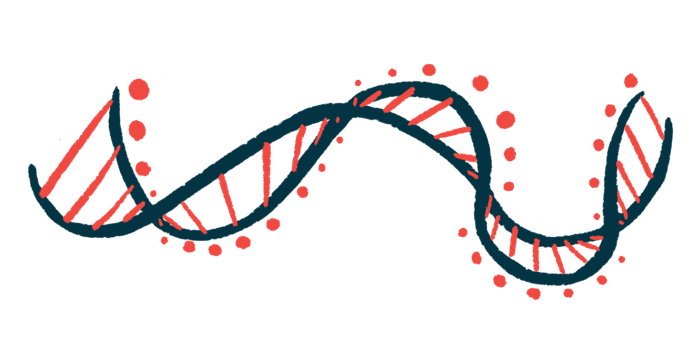Study probes clinical variability from mutations in Batten-linked genes
Researchers target gene-symptom patterns to improve Batten disease prognosis
Written by |

Mutations in genes associated with Batten disease can result in a wide range of clinical manifestations, from whole-body symptoms typical of Batten forms to isolated eye disease, according to a study describing the cases of 11 patients.
Clinical variability was seen even among patients carrying the same mutations in Batten-linked genes, highlighting the complexity of the disease’s genetic mechanisms and the current challenges to define associations between gene mutations and clinical symptoms.
More research is needed to understand the causes of the clinical variability across these Batten-associated genes and establish such gene-symptom associations to improve disease prognosis and care, the researchers noted.
The study, “Phenotypic Variability of Retinal Disease Among a Cohort of Patients With Variants in the CLN Genes,” was published in Investigative Ophthalmology & Vision Science.
Batten comprises a group of inherited, neurological conditions characterized by the toxic buildup of a material called lipofuscin inside cells, which is particularly damaging to brain and eye cells. Patients often experience vision loss, seizures, and cognitive problems.
The condition is inherited mostly in a recessive manner, meaning that disease will develop only if both copies of the gene carry a disease-causing mutation. More than 400 mutations in 13 different genes, commonly referred to as CLN1 to CLN14, have been identified.
Batten is classified into five main types based on the age of onset and severity of symptoms: congenital, infantile, late infantile, juvenile, and adult.
“In addition to the classic systemic [whole-body] diseases associated with these genes, cases of isolated retinal disease have been reported in the literature,” the researchers wrote. The retina is the part of the eye that’s damaged mostly in Batten.
Looking for patterns
As such, it has been difficult to draw clear connections between any specific mutation and patterns of disease symptoms.
Here, a team of researchers in the U.S. and Brazil reported on clinical findings for 11 patients (seven female and four male) from eight unrelated families who carried mutations in both copies of a given gene tied to Batten.
Patients’ mean age at symptom onset was 22 years, ranging from 5 to 27 years, and mean age at last visit ranged from 7 to 63. Their ethnicity was highly variable, from Haitian and Brazilian to a mix of European and European/African ancestries.
One boy was diagnosed with juvenile Batten, the most common form of Batten that’s known to be caused by mutations in the CLN3 gene.
He had begun experiencing acute vision loss starting around age 5, which is typical for this form of the disease. Up to age 7, he showed no neurological symptoms. Genetic testing revealed a previously reported large genetic deletion in both CLN3 copies.
Another four patients also carried CLN3 mutations, but they did not have symptoms consistent with juvenile Batten. Instead, they all showed signs of relatively mild eye problems, such as a reduced ability to see in dim light, but even into their 20s and 30s they had not begun experiencing Batten’s more severe neurological symptoms.
One of these patients carried a never-before-reported mutation, called c.884A>G, in both copies of the CLN3 gene. Another two, who were siblings, carried the large deletion mutation in one CLN3 copy, and another known mutation (c.1213C>T) in the other gene copy.
The researchers noted that prior reports have shown that people with two copies of the c.1213C>T mutation may develop neurological symptoms. However, these have so far not been reported in people carrying only one copy of this mutation — even if the other copy carries a mutation known to cause Batten, as was the case for these two patients.
More vision issues
Three other patients, including two siblings, carried a mutation in one copy of the CLN7/MFSD8 gene that has been linked to a form of late-infantile Batten called CLN7 disease and with isolated eye disease.
Each sibling carried a CLN7 disease-causing MFSD8 mutation, while the other patient also had an MFSD8 mutation that hasn’t been reported before. All three of them started to experience some vision issues in their teens, but none had any overt neurological issues.
“It is possible that the combination of these variants produces a milder protein defect than each variant individually,” the researchers wrote.
There also were two siblings carrying mutations in the CLN8 gene, and one man carrying a mutation in the CLN11/GRN gene. These particular mutations have not been reported before, the researchers noted.
CLN8 mutations have been shown to cause a rare form of late-infantile Batten, while GRN mutations have been linked to a young-adult form of Batten called CLN11 disease.
All three patients had some vision issues, but only the man showed overt neurological problems, particularly seizures starting at age 16 and difficulty walking at age 22. He was diagnosed with CLN11 disease.
“To the best of our knowledge, this is the first report of nonsystemic CLN8 disease,” the team wrote.
Additional studies needed
The scientists emphasized a need for future studies to better characterize genetic variations in Batten-related genes, and how they interact with each other and with other genetic factors to cause disease.
Also, as previous studies “have reported the onset of neurologic complications as late as 45 years of age,” the team wrote, it’s important to continue close monitoring of patients with such mutations.
As new therapies for Batten are developed, better understanding the genetic underpinnings of the disease and related conditions will be crucial for guiding treatment, the researchers argued.
“Extensive study is required to establish a correlation, if it exists, to help counsel patients on their expected prognosis and determine if patients with presumed isolated retinal disease should be considered for treatment of neurologic symptoms such as those currently under development,” they wrote.





